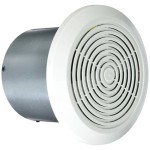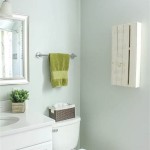White Tile With Grey Grout: A Classic and Versatile Bathroom Design Choice
The combination of white tile and grey grout in a bathroom is a design choice that has consistently proven its enduring appeal. It represents a balance between clean simplicity and subtle visual interest, offering a versatile foundation for a wide range of bathroom styles. This article explores the reasons behind the popularity of this classic combination, examining its aesthetic benefits, practical advantages, and diverse application possibilities.
The appeal of white tile lies in its inherent ability to brighten a space. White reflects light effectively, making even smaller bathrooms feel more spacious and airy. This is particularly beneficial in bathrooms that lack natural light. Furthermore, white serves as a neutral backdrop, allowing other design elements, such as vanities, fixtures, and accessories, to take center stage. It provides flexibility in incorporating bolder colors and patterns without overwhelming the overall aesthetic.
Grey grout complements white tile beautifully by providing subtle definition and contrast. The grey lines effectively highlight the shape and arrangement of the tiles, adding visual interest without detracting from the clean, minimalist look. The shade of grey chosen can be carefully calibrated to achieve different effects. A lighter grey offers a softer, more subtle contrast, while a darker grey creates a bolder, more graphic statement.
Aesthetic Advantages and Versatility of White Tile and Grey Grout
The aesthetic advantages of white tile with grey grout are numerous. Firstly, the combination is inherently timeless. It avoids being overly trendy, ensuring that the bathroom will maintain its stylish appearance for years to come. This timelessness translates to a better long-term investment, as it reduces the need for frequent renovations to keep the bathroom looking current.
Secondly, the combination’s versatility is a significant asset. White tile with grey grout can be seamlessly integrated into various bathroom styles, from modern and contemporary designs to more traditional and even rustic aesthetics. In a modern bathroom, the clean lines and neutral palette create a sleek and minimalist feel. In a traditional bathroom, the combination provides a classic, understated elegance. In a rustic bathroom, it can be paired with natural materials like wood and stone to create a warm and inviting atmosphere.
Thirdly, the combination allows for easy customization and personalization. The neutral backdrop created by the white tile and grey grout provides a blank canvas for expressing individual style through accessories, textiles, and hardware. Colorful towels, artwork, and plants can be readily incorporated to add pops of color and personality. The choice of vanity style, faucet finishes, and lighting fixtures can further enhance the overall design and reflect personal preferences.
The combination's adaptability also extends to the different types of white tiles available. Subway tiles, with their classic rectangular shape, are a particularly popular choice. Their clean lines and slightly beveled edges create a visually appealing pattern when combined with grey grout. Square tiles offer a more geometric and modern look, while larger format tiles can create a sense of spaciousness and minimize grout lines. Even textured or patterned white tiles can be used to add depth and interest without sacrificing the overall clean aesthetic.
Practical Benefits: Maintenance and Durability
Beyond its aesthetic appeal, white tile with grey grout offers several practical benefits. One of the most significant advantages is its relative ease of maintenance. White tile is generally easy to clean, and smooth, glazed surfaces resist staining and water damage. Regular cleaning with a mild detergent is usually sufficient to keep the tiles looking their best.
The choice of grey grout is particularly beneficial in terms of maintenance. Unlike white grout, which can easily become discolored and stained, grey grout is much more forgiving. It conceals dirt and grime more effectively, reducing the frequency and intensity of cleaning required. This is especially important in high-traffic areas such as the shower and around the toilet.
Properly sealed grout is essential for preventing water damage and maintaining the integrity of the tile installation. Sealing the grout creates a barrier that prevents water from penetrating the grout lines and potentially damaging the underlying substrate. Regular resealing, typically every one to two years, is recommended to maintain its protective properties.
The durability of tile, in general, is another practical advantage. Tile is a highly durable material that can withstand daily wear and tear. It is resistant to scratches, stains, and fading, making it an ideal choice for bathroom floors and walls. When properly installed and maintained, tile can last for many years, providing a long-lasting and cost-effective flooring and wall covering solution.
Furthermore, the use of epoxy grout offers enhanced durability and stain resistance. Epoxy grout is a more expensive option compared to traditional cement-based grout, but it provides superior performance. It is highly resistant to water, chemicals, and stains, making it an excellent choice for high-moisture areas such as showers and tub surrounds. Epoxy grout also does not require sealing, further reducing maintenance requirements.
Applications in Different Bathroom Zones and Design Styles
The versatility of white tile with grey grout extends to its application in different zones within the bathroom. In the shower, it creates a clean and hygienic environment. The combination can be used on both the shower walls and the shower floor, providing a cohesive and visually appealing look. The choice of tile size and arrangement can further enhance the design. For example, using larger format tiles on the shower walls can minimize grout lines and create a more seamless appearance.
Around the vanity, white tile with grey grout provides a durable and water-resistant backsplash. It protects the walls from splashes and spills, while also adding a touch of style. The backsplash can extend the full height of the wall or be limited to a shorter wainscoting-style application. The choice of tile shape and size can be coordinated with the vanity design and the overall bathroom style.
On the bathroom floor, white tile with grey grout offers a practical and stylish flooring solution. The grey grout provides traction, reducing the risk of slips and falls. The tile can be arranged in various patterns, such as a classic grid pattern, a staggered brick pattern, or a more intricate herringbone pattern. The choice of tile size and finish can also impact the overall look and feel of the bathroom.
In terms of design styles, white tile with grey grout can be adapted to suit a wide range of preferences. In a minimalist bathroom, the combination creates a clean and uncluttered look. The use of simple, geometric tile shapes and minimal accessories emphasizes the minimalist aesthetic. In a Scandinavian-style bathroom, the combination is paired with natural wood tones and soft textiles to create a warm and inviting atmosphere.
In a modern farmhouse bathroom, white subway tile with grey grout is a classic choice. It provides a timeless and charming look that complements the rustic elements of the farmhouse style. In a coastal-inspired bathroom, the combination is paired with shades of blue and green to create a fresh and airy feel. The use of natural materials like driftwood and seashells further enhances the coastal theme.
The choice of grout color can also be used to create different effects. A lighter grey grout will create a softer, more subtle contrast, while a darker grey grout will create a bolder, more graphic statement. The grout color can also be matched to other elements in the bathroom, such as the vanity color or the hardware finish, to create a cohesive and harmonious design.
Ultimately, the success of white tile with grey grout in a bathroom design lies in its ability to provide a versatile, timeless, and practical foundation. By carefully considering the tile size, shape, arrangement, and grout color, it is possible to create a bathroom that is both beautiful and functional, reflecting individual style and preferences.

What Color Grout To Use With White Tile Myhome

White Subway Tiles With Gray Grout Design Ideas

Want To Make Your White Tiles Stand Out Tile Wizards

Simplicity

Daltile Re 3 In X 6 Ceramic Bright White Subway Tile 0 125 Sq Ft Each Re1536modhd1p4

The Best Grout Colour For White Tile Bathrooms

White Subway Tiles With Gray Grout Design Ideas

White Tile And Gray Grout Light Vs Dark Stefana Silber

28 Subway Tiles With Gray Grout Inspiring Ideas For You

White Subway Tile With Gray Grout Shower Niche







